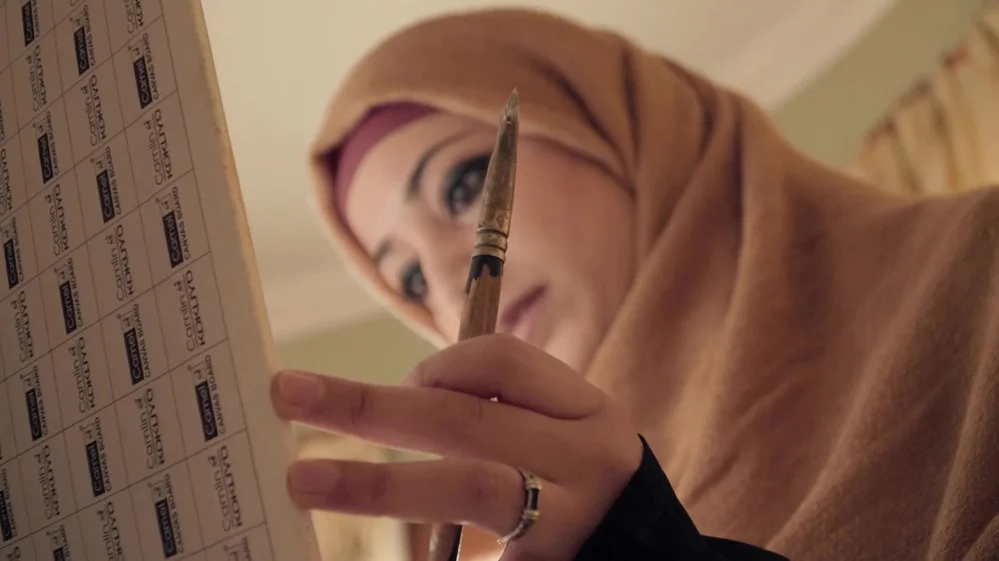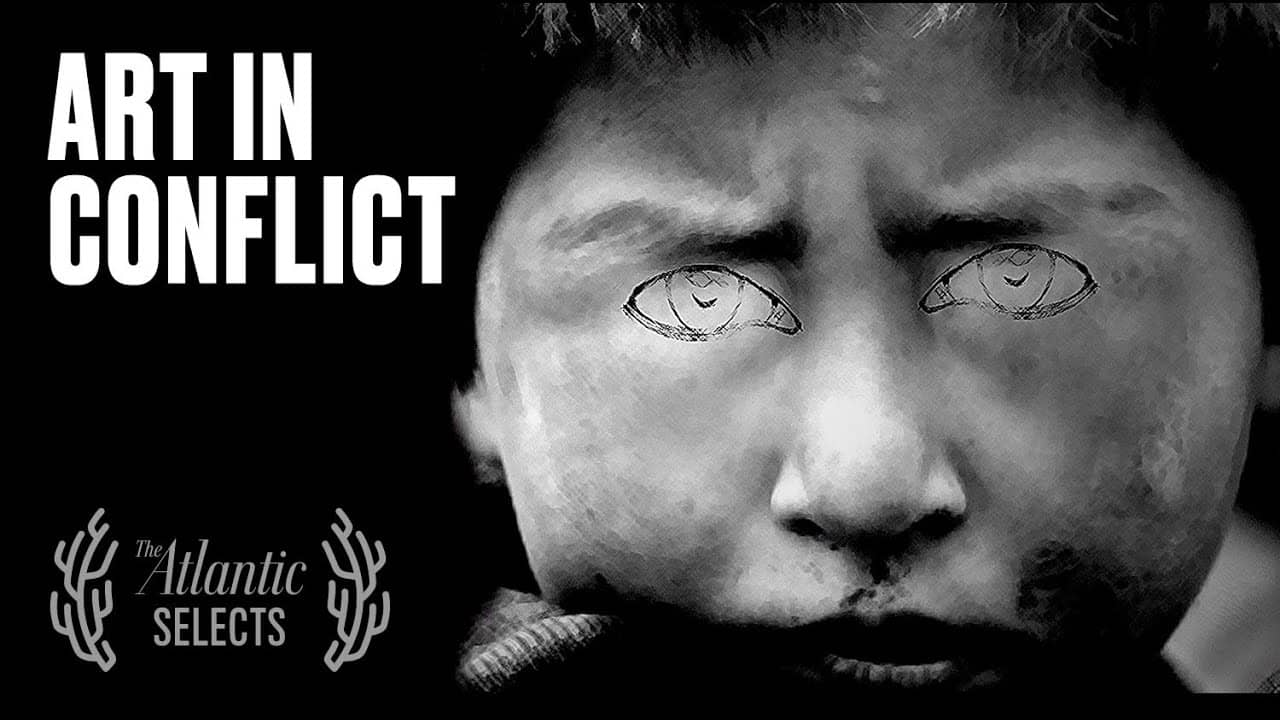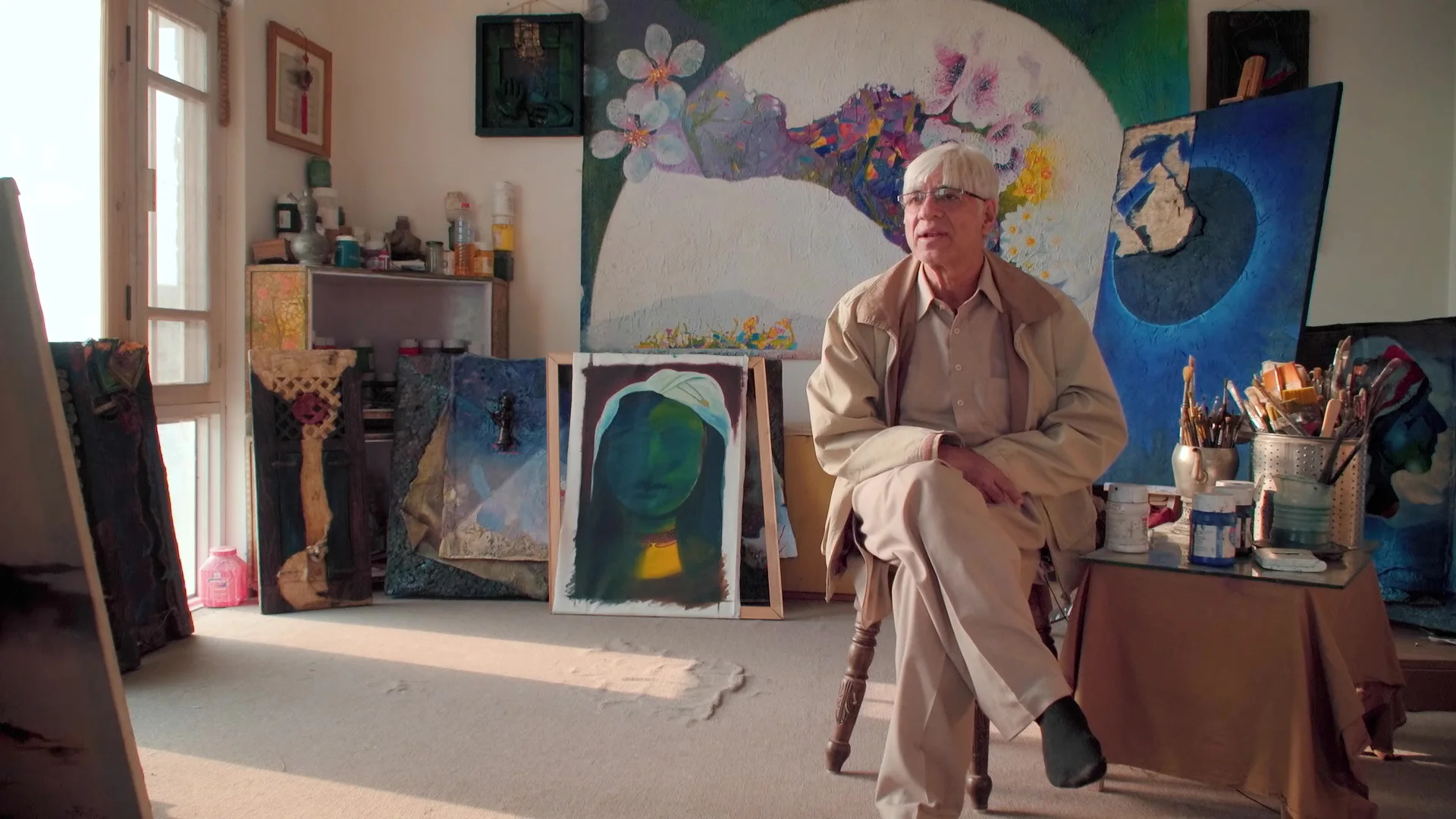
This may seem a docudrama to people outside Kashmir but ‘Raqs-e-Inquilab’ will be remembered as a gutsy attempt in these intolerant times—when Bollywood is auctioning Islamophobia for its petty benefits.
By Asif Khan, Arbeena Shah
YOUR perspective on life, says Shannon L. Alder, an American inspirational writer, comes from the cage you were held captive in.
Enfettering four artists from the conflict-laden valley of Kashmir in a 28-minutes short documentary, Niyanta Shehkar—a Critic’s Choice Shorts and Series Award (CCSSA) recipient, whose recent known work is his short documentary ‘Barf’—joined hands with Mukti Krishan to bring this quote to life.
Raqs-e-Inquilab: Art in a Time of Conflict, which literally means the ‘Dance of Revolution’ was released in 2019 before Jammu & Kashmir was stripped of its special status. It was premiered earlier in 2019 at South Asian Film Festival in Kolkata. The documentary was later released on Youtube last year under the banner of The Atlantic post-abrogation of the special status of Jammu and Kashmir.
The documentary opens with an alluring view of the mountains where the camera is moving till the title of the documentary appears followed by the sound of the train in the background. We listen to a female voice in the beginning talking in a mixed language-Urdu and English, about her journey from being a high school student to an artist painting conflict.
We see gun-toting army men staring suspiciously at the local people. While she continues to talk in the background, shades of Old Srinagar’s restive Nowhatta are put at the front.
We then move into the blank followed by the gunshots and hues and cries of people. And then, we come to see the source of the narration as a girl named Hina Arif comes into the picture.
She’s wearing a light brown head-scarf complimented by a maroon under-wrap. Nibbling a gum and looking down sharply with her kohled-eyes, she moves the pencil on her dairy page.
Hina Arif is the first artist we meet from the valley.
Ye Kaisi Khoon Ki Nadiyaan hain?
(What are these rivers of blood?)
Ye Kaisa Dhuwaan Bazaroun May Hain?
(What smoke has engulfed the markets?)
Ye Kaisa Shor-o-Gul Hain Macha?
(What outcry is this?)
Ye Kiski Buka Bazaar May Hain?
(Who is lamenting in the makets?)
These lines come from poet Zeeshan Jaipuri. The Urdu poem is narrated by the young bard in the background, while the archival footage of protests is played at the foreground. Dressed in a casual pant, shirt and a sweater, the poet says, “it is a duty to write on the conflict”. He later on reveals the different incidents to us of his childhood.

After that we meet third artist named Syed Mujtaba Rizvi, dressed in black jacket and blue jeans. He narrates his childhood experience of an incident of returning to his homeland Kashmir from Iran. He smiles while reflecting on that past incident of the army men lurking in the bus. He is surrounded by his colorful paintings.
Then we meet Masood Hussain, a white-haired, bespectacled man, wearing the traditional Kurta Pajama, sitting on a chair, with some of his paintings around. He’s the final artist in the documentary.
He narrates the story of how he lost a treasure trove—his paintings—to fire in 1989, the year militancy erupted in Kashmir, and how he started painting seriously thereafter.
The celebrated artist talks about the 2016 raging protests when small Kashmiri children were rendered sightless by the massive pellet gun assault. He speaks of these horrors in an abstinent tone.
The documentary—concluding with Zeeshan reciting one of his poems titled as ‘Raqs-e-Inquilab’—rides on an eye-catching cinematography by Anirudh Ganapathy. His depiction of the Hazratbal shrine from a low angle with clear blue sky hovering over it is soothing to the eyes. Similar enthralling treatment has been given to Srinagar’s Khankah, when birds flutter over its turret.
The graffiti art is extraordinarily captured at different instances especially with a moving camera. The lyrics of the closing song of the documentary praises Kashmir and hence, ends on a positive note.
Parveena Ahangar, the founding chairperson of Association of Parents of Disappeared Persons (APDP) in Jammu and Kashmir, brings a rush of motherly emotions alongside her in the documentary that it demanded.
Masood Hussain’s painting of chinar and his digital art work on pellet victims reinvigorates the trepidation of Kashmiris.

Undoubtedly, the documentary is one of the authentic accounts recorded on Kashmir and the plight of its people. However, it’s quite evident from the inception of it that the chosen artists appear delinked. They seem not to owe the words they utter where Zeeshan Jaipuri stands out as an exception.
Almost all the artists are from outside the domain of Shehar-i-Khas, the cultural cradle and confrontational citadel. The absence of its artists from the documentary is astonishing.
One also expects the data regarding the mental health of the people of Kashmir valley, since the accounts of the artists exhibit that it is somewhere existent in their minds. As Hina says, “I don’t know what happened, I started painting conflict.” The same is being supported by Zeeshan and others.
The protestant poet comes into the scene talking of upheaval but keeps the viewers guessing about the path leading to it. None of the artist talks of the psychological changes they’ve undergone as soon as they realized conflict is there to stay.
In a documentary, one doesn’t write dialogues but record whatever comes up abruptly from a character. But from the very beginning, when one listens to Hina Arif or Masood Hussain, their accounts don’t look natural. The preparation of both these artists looks quite evident wherever they feature in the documentary.
Hina Arif’s shikara scene also doesn’t match the overall scenario and it draws sharp contrast with a filmy scene. The background music could’ve added more flavour to the documemtary but unfortunately that is missing.
This may seem a docudrama to people outside Kashmir but Raqs-e-Inquilab will be remembered as a courageous attempt in these intolerant times—when Bollywood is auctioning Islamophobia for its petty benefits.
We recommend this documentary to everyone outside Kashmir in order to gain an insight into the real picture of Kashmir. We rate this documentary from Kashmir 3.5 out of 5 stars.
Follow this link to join our WhatsApp group: Join Now
Be Part of Quality Journalism |
Quality journalism takes a lot of time, money and hard work to produce and despite all the hardships we still do it. Our reporters and editors are working overtime in Kashmir and beyond to cover what you care about, break big stories, and expose injustices that can change lives. Today more people are reading Kashmir Observer than ever, but only a handful are paying while advertising revenues are falling fast. |
| ACT NOW |
| MONTHLY | Rs 100 | |
| YEARLY | Rs 1000 | |
| LIFETIME | Rs 10000 | |












